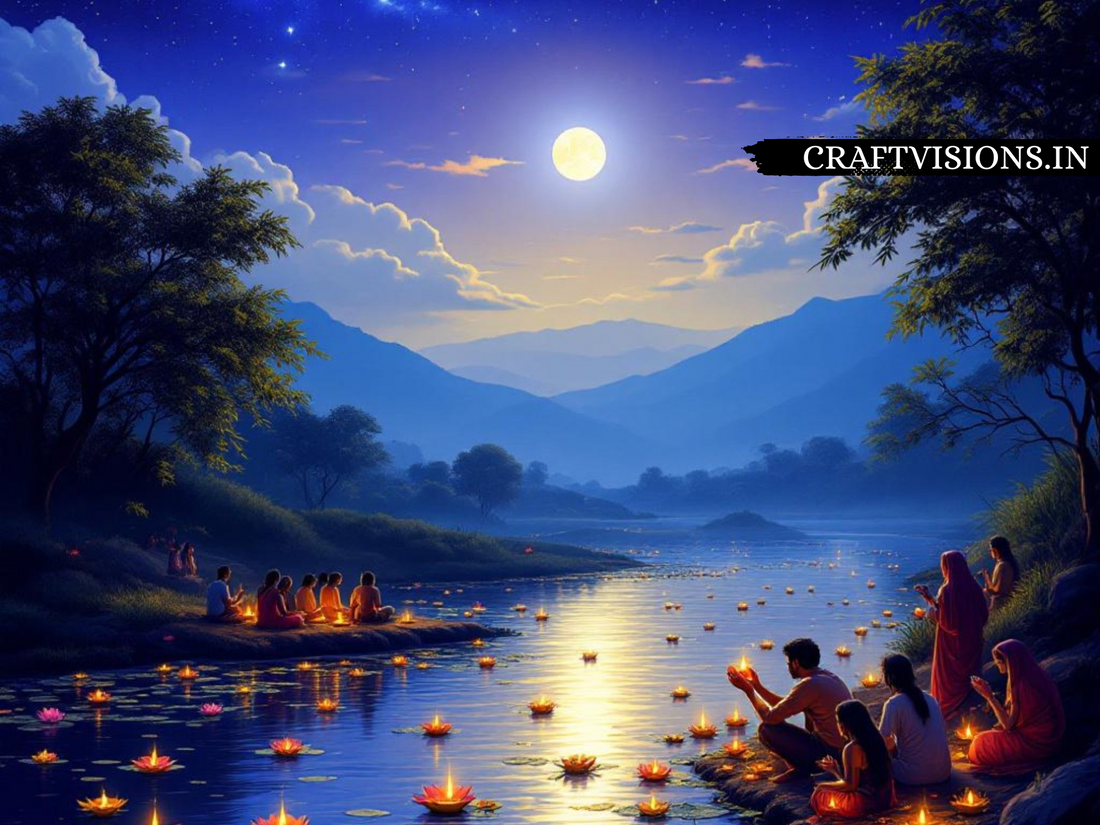
What Is Kartik Purnima?
Share
Kartik Purnima, also known as Dev Diwali or Tripurari Purnima, is one of the most spiritually charged and auspicious days in the Hindu calendar. Celebrated on the full moon day (Purnima) of the Kartik month, it holds immense importance for devotees of Lord Vishnu, Lord Shiva, and Goddess Ganga.
In this post, let’s explore the divine importance of Kartik Purnima, the rituals associated with it, and how you can celebrate it meaningfuly.
What Is Kartik Purnima?
Kartik Purnima is the final day of the Kartik month (as per the Hindu lunar calendar), which is considered the most sacred month of the year. On this day, the heavens are believed to open, allowing divine blessings to shower upon Earth.
It is said to be:
-
The birthday of Lord Kartikeya, son of Lord Shiva and Parvati
-
The day when Lord Vishnu took his Matsya (fish) Avatar
-
The day when Lord Shiva defeated the demon Tripurasura, hence also called Tripurari Purnima

Spiritual Significance of Kartik Purnima
1️⃣ Victory of Good Over Evil
Lord Shiva’s destruction of the demon Tripurasura on this day marks the defeat of arrogance and darkness, making it a highly spiritual and symbolic celebration.
2️⃣ Dev Diwali – Diwali of the Gods
Kartik Purnima is also called Dev Diwali, as it is believed that even the gods come down to Earth to celebrate. In Varanasi, thousands of diyas light up the ghats of the Ganga in a celestial display.
3️⃣ Favorable Day for Pilgrimage
Bathing in sacred rivers like Ganga, Yamuna, and Godavari on this day is said to wash away lifetime of sins.
4️⃣ Vaikunth Lok Opens
Many scriptures believe the gates of Lord Vishnu’s abode (Vaikuntha) open on Kartik Purnima — making any puja or donation on this day equivalent to countless good karmas.
Rituals Observed on Kartik Purnima
-
🛁 Holy Dip (Snan): Taking a bath before sunrise in a sacred river is a key ritual. It is known as “Kartik Snan.”
-
🪔 Lighting Diyas: Devotees light rows of diyas on riverbanks, temples, and homes — especially in Varanasi.
-
🛕 Deep Daan: Offering lamps to temples and rivers as a form of charity and prayer.
-
📖 Reciting Scriptures: Devotees read the Satyanarayan Katha, Shiva Purana, or Vishnu Sahasranama.
-
🍚 Anna Daan & Donations: Giving food, clothes, and essentials to the poor is highly meritorious.
-
🧘♂️ Vrat (Fasting): Many observe a full-day fast with spiritual focus and prayer.

How to Celebrate Kartik Purnima at Home
-
Begin the day with a bath and light incense and ghee diyas.
-
Place idols of Lord Vishnu or Lord Shiva in your mandir and offer flowers and tulsi leaves.
-
Chant “Om Namah Shivaya” or Vishnu mantras 108 times.
-
Light multiple diyas in your balcony or courtyard.
-
Donate food, clothes, or money to a temple or someone in need.
Bring Divinity Home with CraftVisions
Celebrate Kartik Purnima with spiritually crafted idols, brass diyas, and spiritual pendants from CraftVisions. Whether you're looking for a Lord Vishnu, Shiva Parivar, or Kartikeya idol, our collection add divine charm to your rituals.
Conclusion
Kartik Purnima is more than just a festival — it is a cosmic opportunity to cleanse the soul, light the lamp of devotion, and honor divine victories. By participating in the sacred rituals, ofering prayers, and spreading light, we align ourselves with spiritual harmony and inner peace.
Let this Kartik Purnima be the start of a brighter, purer, and more devoted path for your soul.
❓ FAQ Section
Q1: What is the best time to light diyas on Kartik Purnima?
Diyas are ideally lit after sunset, especially near tulsi plants, in temples, and along riverbanks or balconies.
Q2: Can I observe Kartik Purnima at home?
Absolutely! You can celebrate by performing a holy bath, lighting lamps, chanting Vishnu sahasranama, and keepin a clean altar.
Q3: Is fasting compulsory on Kartik Purnima?
While not mandatory, fasting is highly recommended to enhance spiritual focus and receive divine blessings.
Q4: Which deities are worshipped on Kartik Purnima?
Primarily Lord Shiva, Lord Vishnu, Lord Kartikeya, and the holy Tulsi plant.